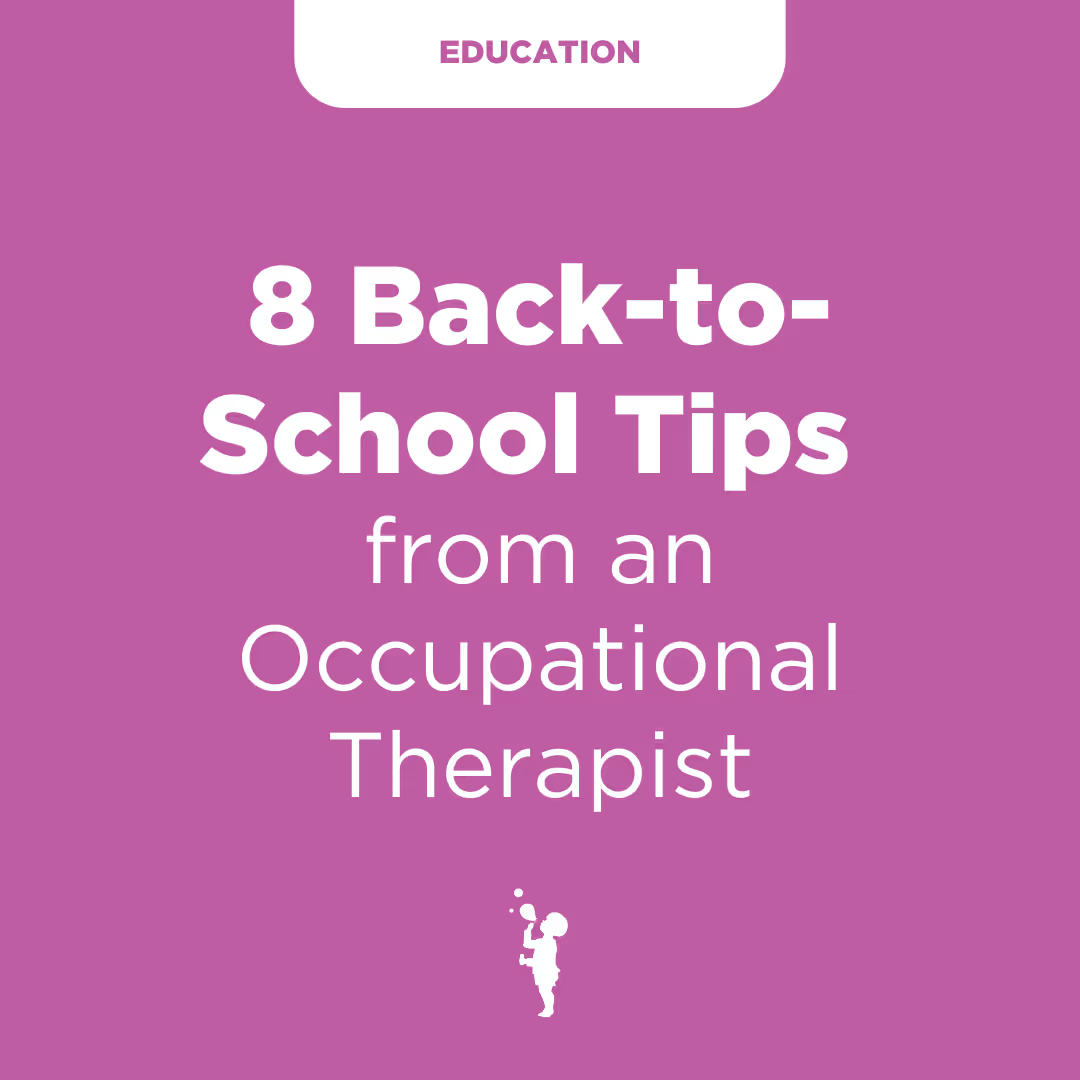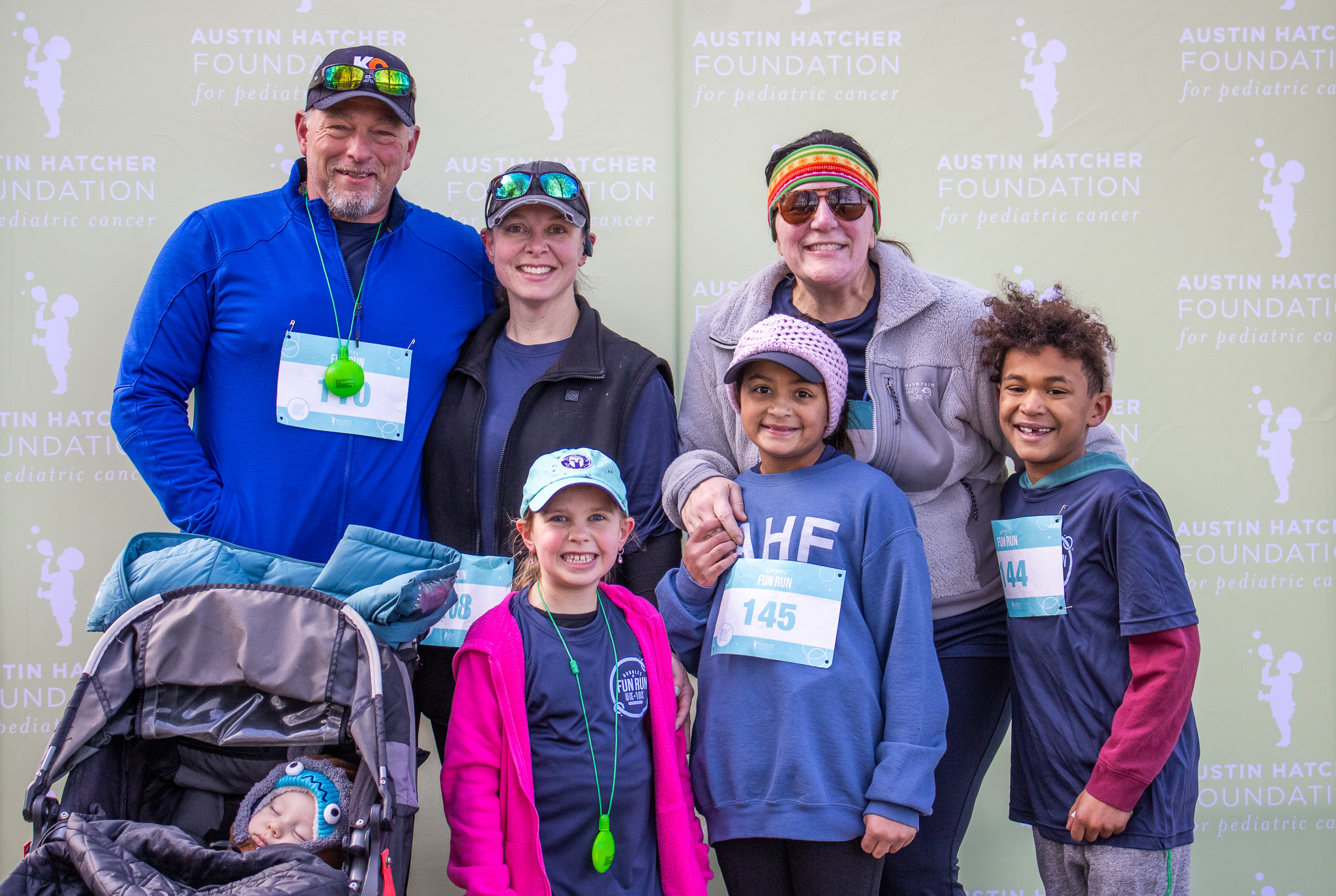The ABCs of Occupational Therapy
As an Occupational Therapist, I use a holistic, therapeutic lens to identify and find fun strategies to improve fine motor skills, visual motor skills, gross motor skills, coordination skills, and more. Occupational Therapists focus on activities of daily living (such as dressing, grooming, toileting, and more), play, work, social participation, rest and sleep, health management, instrumental activities of daily living (such as medication management and pet care), education, and leisure pursuits. This truly is an all-encompassing profession. At the Austin Hatcher Foundation, we provide 100%-free occupational therapy services to individuals undergoing active pediatric cancer treatment, pediatric cancer survivors, siblings of those affected by cancer, and their family members. We offer services that holistically include all family members for their ENTIRE lifetime; this is something truly unique and worth celebrating.
In honor of Occupational Therapy (OT) month, I created the “ABCs of OT” to help you learn more about OT:

A- Advocate: Occupational therapists are advocates for children within the school system. This may pertain to advocacy towards a 504 Plan or Individualized Education Plan that can best support students and their educational needs.
B- Bilateral coordination: This skill is related to using both the left and right sides of the body, whether it’s both arms or both legs, to work together to engage in a game or activity.
For example, one uses fine motor bilateral coordination to button up a shirt, and gross motor coordination for jumping jacks or jumping rope!
C- Constraint-Induced Movement Therapy: This is an evidence-based intervention option that focuses on only using the affected side of the body and applying a brace to the unaffected side to focus attention on the affected side for more functional use opportunities and to increase neuroplasticity and new neuronal communication/connections.
D- Developmental delay: This refers to any diagnosis in which a child’s developmental skills have been impacted and need more dedicated therapy to help improve in these areas, related to skills such as fine motor, visual motor, and bimanual coordination.
E- Emotional Regulation: This refers to the ability to regulate our emotions and feelings in an age-appropriate way. For most children, this begins with observing good, healthy examples of coping and co-regulation strategies from close adults within their lives. Through good co-regulation, a child develops skills to self-regulate and emotionally regulate in a more refined manner.
F- Fun: Children enjoy FUN activities, therefore, within occupational therapy, we strive to incorporate interest areas into tasks to make them more meaningful and enjoyable.
G- Gross motor skills/coordination: These skills pertain to activities that involve and activate the body’s larger muscle groups, such as when running, jumping, climbing, and tumbling. These activities help to provide proprioceptive input to the body which can be quite calming.

H- Handwriting: Working on pre-writing skills, strokes, letter formation, being able to write our names, and progressing to writing sentences and paragraphs and potentially learning cursive; this is an important skill.
I- Imaginative play: Also termed as “pretend play,” this type of play allows children to express their creativity and imagination within various scenarios related to their favorite toys. This form of play helps further develop emotional awareness and emotional regulation for children.
J- “Just-right” challenge: This refers to ensuring that the steps of an activity accurately match a child’s developmental skills level. There are always ways to “grade up” to make an activity more challenging and methods to “grade down” to make an activity less challenging.
K- Kid-Centered: Refers to the importance of designing activities and tasks for children based on their interests and preferences. This approach takes into account the child's needs, abilities, and interests, which can increase motivation and engagement in the activity. The goal is to create a task or activity that is meaningful and relevant to the child, which can lead to increased quality and attention to the task.
L- Life Skills: These skills are related to the range of abilities that help us understand necessary tasks that aid in areas such as preparation for a job interview (such as learning how to tie a tie), car maintenance (such as changing the oil or changing a tire), and financial management (such as writing a check or balancing a checkbook). These are important underlying skills that support more complex challenges and situations.

M- Meal preparation: This Instrumental Activity of Daily Living, IADL, refers to all the necessary steps to prepare meals. These skills involve chopping produce, consulting a recipe, operating various kitchen appliances, and mixing ingredients.
N- Nutrition: Giving our bodies the proper nutrition impacts many areas, including our cognition, memory mood, and overall ability to exert energy to engage in daily tasks. This is especially important for those undergoing active cancer treatment as a means to best sustain their health and wellness through rich and nutritious food sources due to a decrease in vitamin deficiency that may be a side effect of treatment.
O- Organization: This can be related to various aspects and areas of our life, including, but not limited to: home tidiness/home care, academics, and thoughts/cognitive impacts. This is related to finding strategies that help boost reminders, working memory, and overall clearer intentions within our lives.
P- Pencil grasp: This refers to the act of holding a writing utensil with an age-appropriate grasp whether it be a fisted/cylindrical grasp, digital pronate grasp, static tripod grasp, or dynamic tripod grasp. The underlying skills to be able to hold a pencil sufficiently include the following: fingers, wrist, and hand strength, grip and pinch strength, dexterity, and palmar strength.
Tip: Using crayons broken in half for younger children (ages 2-3) is an excellent way to encourage a more refined and age-appropriate grasp. It's important to provide children with age-appropriate writing utensils and activities to promote the development of their fine motor skills. Theraputty is another fantastic activity that can be used to increase hand and finger dexterity and strength.
Q- Quality of Life: Overall quality of life means living each day with purpose, good social connection, opportunities to boost our mental health, and reducing as many stressors as possible. This means striving for consistent exercise, good nutrition, rest, and social opportunities with those in our homes and the community.
R- Rest and Sleep: This area of occupation is essential to all individuals; our evening/nighttime routine is vital to the quality of rest and sleep our bodies receive. Tip: Try reading or journaling before bed instead of being on the phone as a means to reduce the amount of blue light emission exposed to your eyes. Try drinking hot tea or warm lemon water before bed to help your body relax and unwind.
S- Sensory System: Processing related to hearing, movement, smell, taste, and touch input. Example: multisensory activity- painting with pudding for touch/tactile input and olfactory/smell input. Sensory activities are great for kids of all ages!
T- Transitions: Transitions between activities and “cleaning up” are sometimes challenging or motivating for a child. Therefore, the use of a sensory countdown timer and/or visual schedule can help with this!
U- Utensil use: This refers to the ability to independently use and manipulate food with various utensils including, but not limited to, a fork, spoon, and knife. Using utensils effectively further promotes self-feeding skills during mealtimes.
V- Visual perception: The processing of and ability to interpret the surrounding environment, taking in all visual stimuli efficiently. This skill begins to develop when a child is young and continues to develop through the younger years through play-based activities, working on visual-motor integration, and visual discrimination.

W- Weight-bearing activities: These activities serve a dual purpose: 1) increasing strength within the part of the body that is bearing weight. 2) For touch processing through the arm or leg, in order to alert the body and brain where, how much, and when that type of input is occurring and being processed. An example of this is lying on a yoga ball on the stomach and stretching out both arms to “walk” out with arms and back as a way to increase core strength and elicit a proprioceptive input response.
X- eXamine abilities, over weaknesses: Looking at skills and abilities through a positive lens is much more therapeutic and motivating to further work on more difficult skills). Example: A child has difficulty with engaging in cooperative play (sharing/taking turns with peers), however, the child can now engage in parallel play (side-by-side play) with peers nearby, each engaging with different toys, however, there is still a good social component and interaction within this scenario.
Y- Yoga therapy: Yoga therapy is a type of therapy that involves calming movements and deep breathing techniques associated with the health and wellness activity of yoga. This therapy can help individuals elicit slower-paced breathing, find a sense of peace and calm, and improve their coordinated movements to successfully learn and master yoga poses.
Z- Zigzag activities: These activities can be related to both fine motor and gross motor tasks. For fine motor, this could encompass practicing pre-writing strokes (tracing and drawing horizontal and vertical lines, crosses, and circles) as a means to best transition to tracing with a writing utensil on wavy, zigzag, and curvy lines, which can better develop visual-motor integration skills and hand-eye coordination. For gross motor, this could look like a jump rope activity, jumping from cone to cone in a zigzag formation).
Occupational therapy is truly a remarkable profession that touches every aspect of our lives. As an occupational therapist, it is a privilege to educate, implement, and advocate for interventions that can help individuals adapt and modify their skills to meet their unique needs, furthering their overall health and well-being.






.png)
.png)
